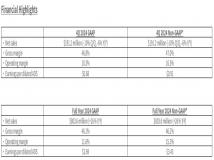这篇文章里介绍了Windows系统使用Nginx服务器运行thinkPHP程序的路径配置问题,希望对于初学Nginx服务器相关的朋友有帮助,更多Nginx安装、配置、报错处理等资源请本站内搜索。。
在apache下用thinkphp做了一个项目 倒腾的差不多了,就上传到服务器中测试,结果发现服务器是用的nginx,TP中的模板替换__PUBLIC__在其他页面中会解析出错, 网上了解到是因为nginx的pathinfo是默认没有设置的
为了调试,下午在win下装了一个nginx
如果电脑上已安装过apache,请把它的端口改一下,不要让它与nginx冲突,打开AppServ/Apache2.2/conf/httpd.conf修改67行 Listen 80 我改为8080 可以改成任意空闲的端口
然后打开windows下的php.ini文件把476行enable_dl = On前面的分号去掉
然后检查下AppServphp5ext下有没有一个叫php_redis.dll的文件,没有的话下载一个相同版本的扩展文件,并且在php.ini中打开注释601行
这些条件都弄好之后 ,我们可以进行一下的操作 ,首先下载一个nginx放到一个文件夹下取名为nginx
打开我们nginx的配置文件
#location ~ .php$ {
#
root
html;
# fastcgi_pass 127.0.0.1:9000;
# fastcgi_index index.php;
# fastcgi_param SCRIPT_FILENAME
C:/AppServ/www/$fastcgi_script_name;
# include
fastcgi_params;
# }
找到这一段 替换成
location ~* .(php[3-9]?|phtm[l]?)(/.*)*$ {
fastcgi_index index.php;
fastcgi_pass 127.0.0.1:9000;
include fastcgi_params;
set $path_info "";
set $real_script_name $fastcgi_script_name;
if ($fastcgi_script_name ~ "^(.+?.php)(/.+)$") {
set $real_script_name $1;
set $path_info $2;
}
fastcgi_param SCRIPT_FILENAME
C:/AppServ/www/$fastcgi_script_name;
fastcgi_param SCRIPT_NAME $real_script_name;
fastcgi_param PATH_INFO $path_info;
}
http://www.server110.com/
我的所有配置都在这里 不妨给大家做个参考nginx全部配置
#user nobody;
worker_processes 1;
#error_log logs/error.log;
#error_log logs/error.log notice;
#error_log logs/error.log info;
#pid logs/nginx.pid;
events {
worker_connections 1024;
}
http {
include mime.types;
default_type application/octet-stream;
#log_format main '$remote_addr - $remote_user [$time_local] "$request" '
# '$status $body_bytes_sent "$http_referer" '
# '"$http_user_agent" "$http_x_forwarded_for"';
#access_log logs/access.log main;
sendfile on;
#tcp_nopush on;
#keepalive_timeout 0;
keepalive_timeout 65;
#gzip on;
server {
listen 80;
server_name 127.0.0.1;
#charset koi8-r;
#access_log logs/host.access.log main;
location / {
root C:/AppServ/www;
index index.html index.htm index.php;
}
#error_page 404 /404.html;
# redirect server error pages to the static page /50x.html
#
error_page 500 502 503 504 /50x.html;
location = /50x.html {
root html;
}
# proxy the PHP scripts to Apache listening on 127.0.0.1:80
#
#location ~ .php$ {
# proxy_pass http://127.0.0.1;
#}
#location ~ .php$ {
# proxy_pass http://192.168.1.208:8001;
#}
# pass the PHP scripts to FastCGI server listening on 127.0.0.1:9000
#
#location ~ .php$ {
#
root
html;
# fastcgi_pass 127.0.0.1:9000;
# fastcgi_index index.php;
# fastcgi_param SCRIPT_FILENAME
C:/AppServ/www/$fastcgi_script_name;
# include
fastcgi_params;
# }
location ~* .(php[3-9]?|phtm[l]?)(/.*)*$ {
fastcgi_index index.php;
fastcgi_pass 127.0.0.1:9000;
include fastcgi_params;
set $path_info "";
set $real_script_name $fastcgi_script_name;
if ($fastcgi_script_name ~ "^(.+?.php)(/.+)$") {
set $real_script_name $1;
set $path_info $2;
}
fastcgi_param SCRIPT_FILENAME
C:/AppServ/www/$fastcgi_script_name;
fastcgi_param SCRIPT_NAME $real_script_name;
fastcgi_param PATH_INFO $path_info;
}
# deny access to .htaccess files, if Apache's document root
# concurs with nginx's one
#
#location ~ /.ht {
# deny all;
#}
}
# another virtual host using mix of IP-, name-, and port-based configuration
#
#server {
# listen 8000;
# listen somename:8080;
# server_name somename alias another.alias;
# location / {
# root html;
# index index.html index.htm;
# }
#}
# HTTPS server
#
#server {
# listen 443;
# server_name localhost;
# ssl on;
# ssl_certificate cert.pem;
# ssl_certificate_key cert.key;
# ssl_session_timeout 5m;
# ssl_protocols SSLv2 SSLv3 TLSv1;
# ssl_ciphers HIGH:!aNULL:!MD5;
# ssl_prefer_server_ciphers on;
# location / {
# root html;
# index index.html index.htm;
# }
#}
}
此时差不多配置好了那么我们运行PHP要借助一个AppServphp5下叫php-cgi.exe文件
那么我们怎么用它呢?有一段命令
cd到你appserv在的盘符
cd AppServ/php5/
start php-cgi.exe -b 127.0.0.1:9000 -C c:windowsphp.ini
执行上面这段话,成功的话,会跳出一个黑色的窗口,我们不要去动它,如果想省事的话,写一个.bat文件
C:
cd AppServ/php5/
start php-cgi.exe -b 127.0.0.1:9000 -C c:windowsphp.ini
然后开启我们的nginx
cd 到nginx目录下
start nginx
nginx -s reload //然后重载一下配置文件
我们写两个.bat文件 一个是开启 一个是停止
stop_nginx.bat
@echo off
echo Stopping nginx...
taskkill /F /IM nginx.exe > nul
echo Stopping PHP FastCGI...
taskkill /F /IM php-cgi.exe > nul
exit
start_nginx.bat
@echo off
echo Starting PHP FastCGI...
RunHiddenConsole e:/DedeCMS/PHP5/php-cgi.exe -b 127.0.0.1:9000
-c e:/DedeCMS/PHP5/php.ini
echo Starting nginx...
RunHiddenConsole e:/DedeCMS/nginx.exe
Exit
以上配置完成之后 ,thinkphp就不会出现路径问题了
声明: 此文观点不代表本站立场;转载须要保留原文链接;版权疑问请联系我们。










